Today is the Day of Remembrance, a day of observance of February 19th, 1942 when the crime against humanity that was the mass internment of over 120,000 Japanese Americans, two thirds of whom were native-born American Citizens, first started. Innocent families, children, grandparents, were forcefully relocated into concentration camps primarily on the west coast of the United States. This was all done out of blatant ignorance and cowardice of President Franklin D. Roosevelt shortly after the attack on Pearl Harbor, with the signing of Executive Order 9066, meant to solve the “Japanese Problem.” The irony of creating our very own concentration camps on US soil while fighting a war to end those created in Europe was, apparently, beyond the comprehension and humanity of the United States government (and the white neighbors and officials who assisted in irrevocably scarring the lives of so many Japanese Americans). American troops may have liberated those being persecuted overseas during WWII, but we were, and are, never at a loss for excuses for the persecution we so easily allow on our own shores, a sense of patriotic ego that has remained inflated since this country’s founding.
This crime was perpetuated by the fact that, even though I grew up in a state that willingly played a part in rounding up innocent families, I learned NOTHING about this abominable human rights violation until I started playing Stanford Taiko (Japaenese ensemble drumming) in college. Huge thanks to the American Taiko community, the Bay Area Japanese American community and specifically to Steve Sano and Linda Uyechi for providing much-needed education that our state-mandated-curriculum through primary and secondary school did not.
Thank you also to Steve for letting me use your photos of Manzanar, the first of 10 concentration camps established by the US government. The monument at the Manzanar cemetery, seen in the photos here by Steve, reads (translated): “Monument to console the soles of the dead.” Manzanar is still the site of an annual pilgrimage, first started in 1945 by two Japanese American ministers. This movement was championed by young Japanese Americans who showed the trued patriotism that their government never could. One of the key leaders, Sue Kunitomi Embrey, initiated that first 1969 pilgrimage, and her work helped to push the US Government to issue a formal apology for the internment in 1988, and pay reparations to every surviving internee. Four years later, the Manzanar Historic Site was established. To this day, thousands take the pilgrimage to Manzanar on the last Saturday every April. If you visit today, you’ll notice ongoing reconstruction of the camp barracks and other facilities, which were, not surprisingly, hastily torn down after WWII, lest the shameful acts of the government be recognized as such.
The white American government, as we all know, loves to “other” any non-white residents of the United States. This is institutionalized racism at its finest, it is not new, it is not shocking, it is perfectly normal in a country that, to this day, fails to correct ongoing systemic racism in state-funded bodies and agencies. As George Takei describes in the documentary “To Be Takei,” a year into being imprisoned in the internment camps, the US Government devised the equivalent of a witch hunt, in the form of a “Loyalty Questionnaire.” In summation, the questionnaire asked if you would swear your loyalty to the US Government and forswear loyalty to the Emperor of Japan. Of course, if you answered “Yes,” that “proved” that you had, in fact, been loyal to the Emperor of Japan and thus supported the need for such concentration camps, and if you answered “No” you were deemed disloyal to the US and transported to the high security concentration camp at Tule Lake. There are never right answers when the US Government is looking to cover their ass. As Takei puts it, his parents lamented that the government had taken their business, their home, and their freedom, but the one thing they would not allow to be taken from them was their dignity. Today the children and adults we, as the US, force into camps and kick out of the country may be Latin Americans or Muslims, in 1942 they were Japanese Americans. This is not to belittle the horrific internment that this Day of Remembrance observes, but to remind us all that this isn’t a historical wrong, it is an ongoing one that we all must fight to correct daily in our political and social bodies.
Resources for learning more about Day of Remembrance:
Children of the Camps – documentary
To Be Takei – film by and about George Takei, who was imprisoned in two of the internment camps as a child
Manzanar: “Never Again”
Resistance at Tule Lake – documentary
Lesson plan for teachers
Steve mentioned that many people leave origami tsuru (cranes), and I’ve attempted to make my best ones to adorn this black sesame and white chocolate cake to honor the Day of Remembrance. The cake was something I dreamt up to honor the Day of Remembrance. Black sesame is a common and deeply earthy and comforting, at least to me, flavor in so many Japanese and Japanese American desserts and dishes. The white chocolate ganache in between each layer smooths the bite of black sesame into a caramelly mix of dreamy flavors. This is the first rectangular layer cake I’ve made, so there’s lots to improve on, but the flavors I’m truly happy with. If you’re looking for other Japanese-inspired flavors, our matcha pound cake is fantastic, as is this matcha tres leches cake!
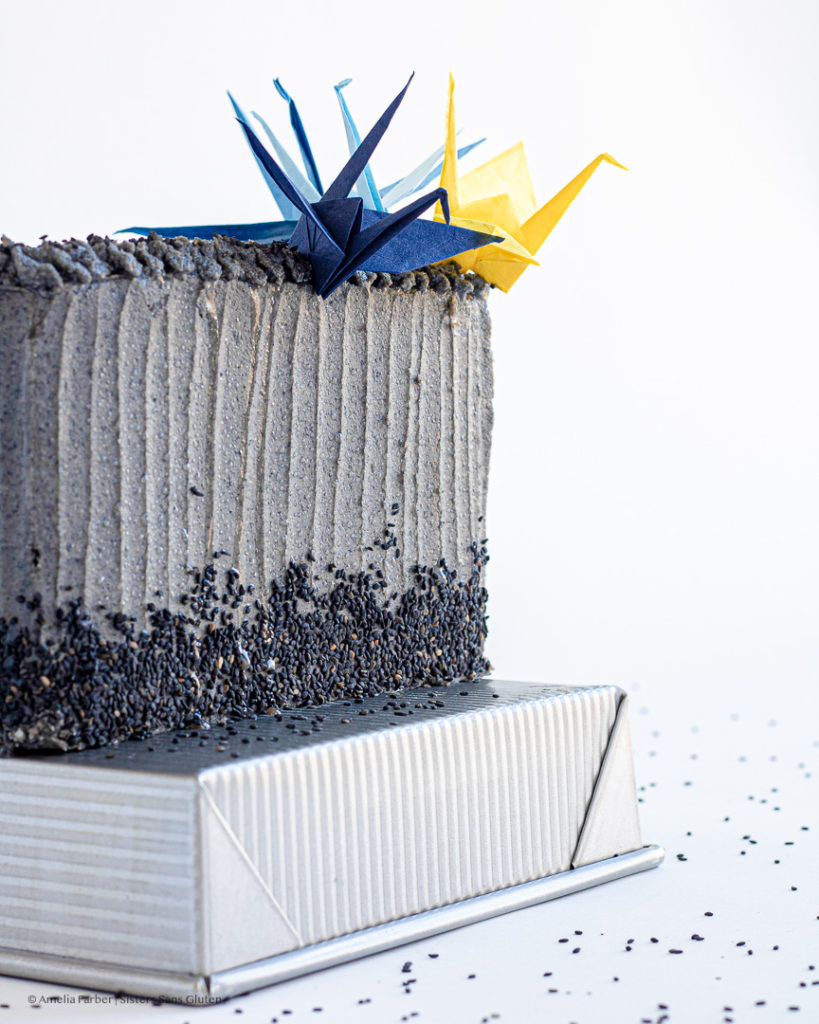
Gluten Free Black Sesame and White Chocolate Layer Cake
Equipment
- 9×9 square cake pan
- Cake scraper
- Piping bags and tips
- Small frying pan
Ingredients
For the cake:
- 4 large eggs
- 1 Cup white sugar
- 3/4 Cup canola oil
- 3/4 Cup sour cream
- 3/4 Cup milk
- 1 tsp vanilla extract
- 1 Cup gluten free 1-1 flour mix with xanthan gum added (if it doesn't have xanthan gum, add 1 teaspoon xanthan gum)
- 1/2 Cup sweet rice flour
- 1/2 Cup arrowroot starch
- 1/2 Cup packed blanched almond flour
- 3 Tbsp black sesame powder
- 1/4 Cup black sesame paste
- 1 1/2 tsp baking powder
- 1 tsp baking soda
- 1/2 tsp salt
For the black sesame buttercream:
- 2 Cups salted butter room temperature
- 3-4 Cups sifted powdered sugar
- 1/4 Cup black sesame powder
- 2 Tbsp black sesame paste
- 1-2 Tbsp heavy cream
- pinch salt
For the white chocolate ganache:
- 12 oz good quality white chocolate
- 1 Cup heavy cream
For the black sesame whipped cream:
- 1 Cup heavy cream
- 1/4 Cup powdered sugar
- 1 Tbsp black sesame paste
- 3 Tbsp black sesame powder
- pinch salt
For construction:
- 3 Tbsp black sesame seeds
Instructions
To make the ganache:
- First, make the ganache, because it will need to chill for a few hours. Heat the cream in the microwave for a minute, then pour into a medium bowl with the white chocolate and let sit for 2 minutes. Then stir until the cream and melted white chocolate is totally smooth. Chill in the fridge for 2-3 hours, stirring every 30 minutes, and then remove and beat with an electric mixer for 3-4 minutes until thicker and a spreadable consistency, then put back in the fridge until using.
To make the cake:
- Make your cake! You'll be cutting it into four layers later. Spray a 9×9 inch square cake pan with cooking spray and line with parchment paper, then spray again and set aside. In a large bowl, whisk the eggs, sugar, oil, sour cream, milk, and vanilla until smooth. Add in the flours, starches, black sesame powder and paste, and baking powder and soda, and salt, and whisk thoroughly until fully mixed and smooth. If the batter feels too thick (it should be easily pourable) add 1-2 more tablespoons of milk. Then pour batter into the prepared pan and baked for 35-45 minutes or until a skewer or knife inserted into the center of the cake comes out clean. It will dome nicely and have a hard crust on top. Let cake cool completely before turning it out onto a cooling rack, then carefully slice off the domed top so you're left with a perfectly flat top. Then slice the cake in half giving you two thick rectangles, and then carefully slice each of the rectangles into two layers to get four equal-sized rectangular cake layers. Continue to cool before constructing.
To make the buttercream:
- While the cake is baking and cooling, make the fillings and frosting. First, make the buttercream. In a large bowl, beat the butter on high for 3-4 minutes until lighter and fluffy. Add one cup of the powdered sugar and beat until smooth, then add another cup and the black seasame paste and powder and beat until smooth. Add the last of the powdered sugar, tasting at each stage, and the vanilla and salt and beat until smooth. Add cream if the frosting is too thick to spread, then scoop most of the frosting into a piping back with a 1/2 inch round opening.
To make the whipped cream and toasted sesame seeds:
- First, make the whipped cream! Slowly beat, using a whisk or electric mixer, the heavy cream until soft peaks form. Add the powdered sugar, black sesame powder and paste, and pinch of salt and continue beating until stiff peaks form.
- Then toast your black sesame seeds for decoration. Pour seeds into a medium frying pan and heat on medium low for 5-6 minutes or until they smell toasty and nutty, then remove and let cool.
Construct the cake.
- Place one cake layer on a cakeboard or plate and pipe on a rim and layer of the buttercream, then fill with the white chocolate ganache and whipped cream, and repeat layering until the top cake layer is on top. I use a generous amount of the white chocolate ganache in each layer so that you get a good section of white chocolate in each bite – don't skimp on this! Finally, use a cake scraper to crumb coat the entire cake – it will be a bit fragile so get it into the freezer and freeze for at least an hour before adding the final frosting coat. Pipe any last buttercream around the top, and press the toasted black sesame seeds into the base of the cake or on the top or both for decoration. I recommend re-freezing the cake and then letting it thaw for about an hour before slicing for clean, solid slices!
Tag @sisterssansgluten on Instagram if you snap a photo of your cake!
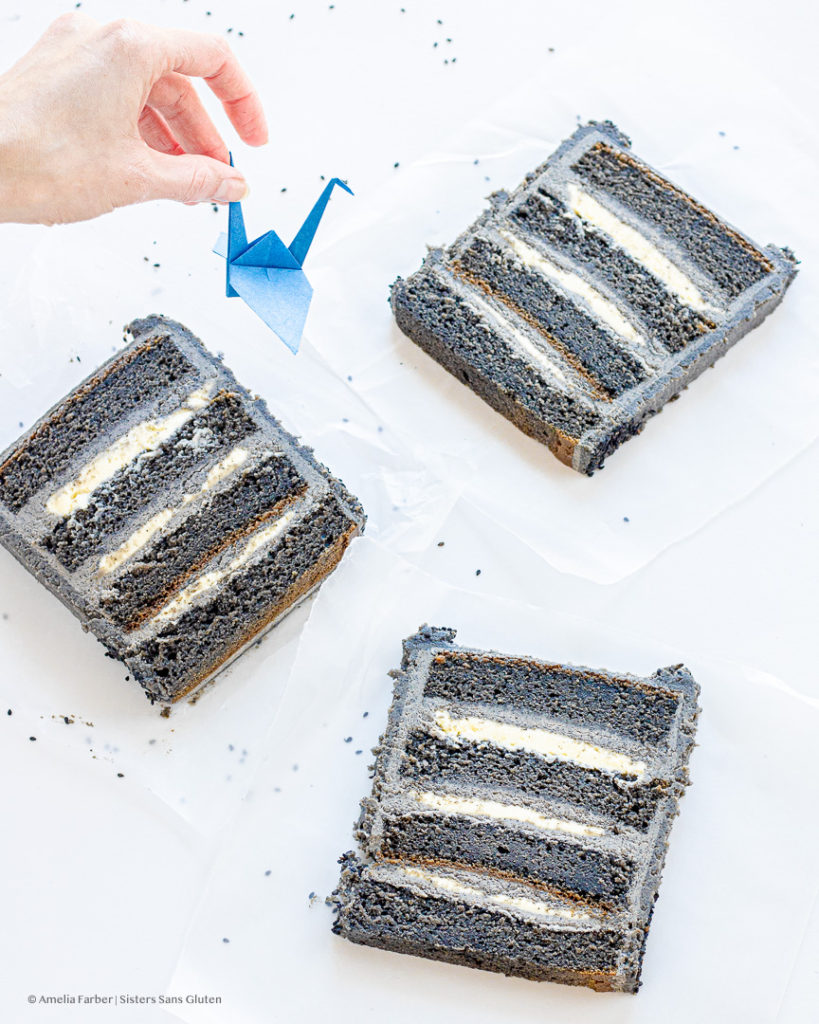
Food photography and styling by Amelia Farber

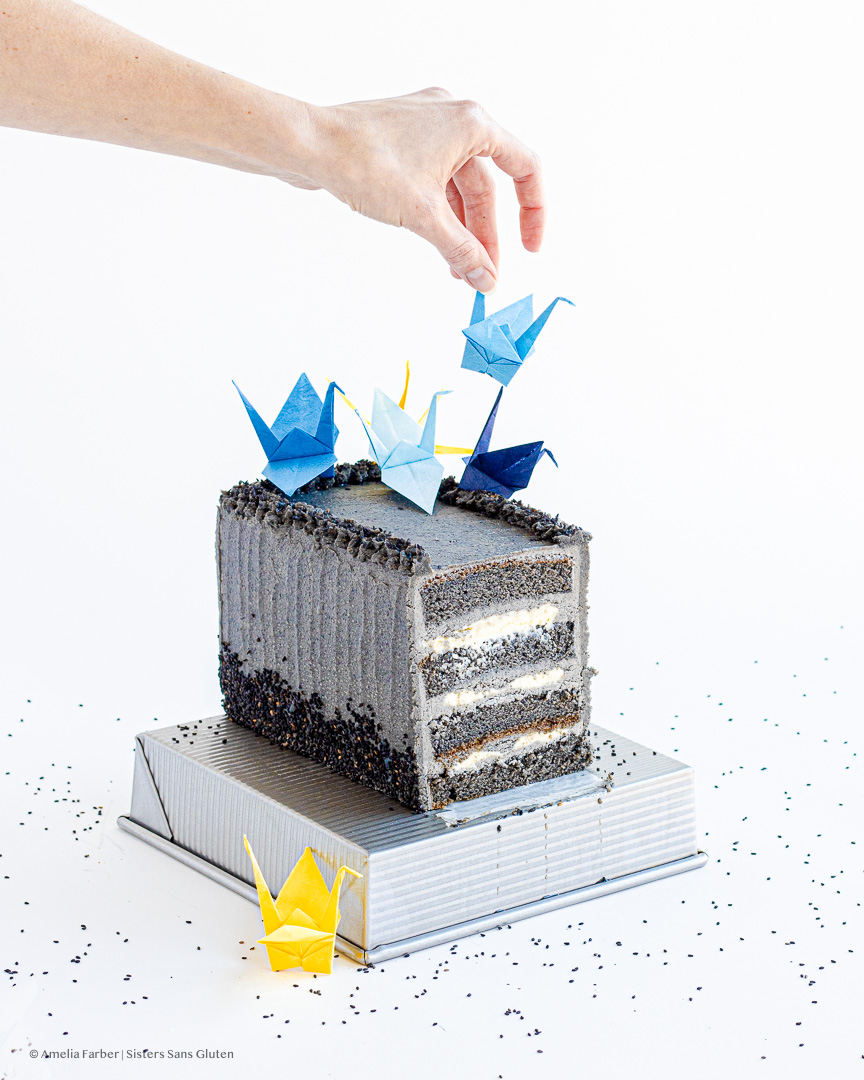



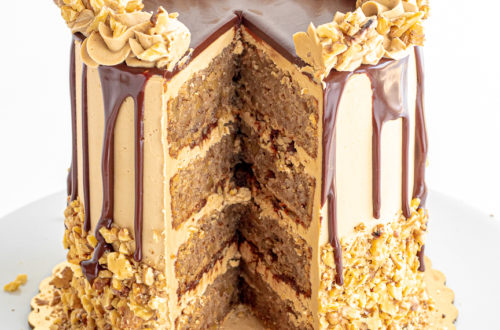

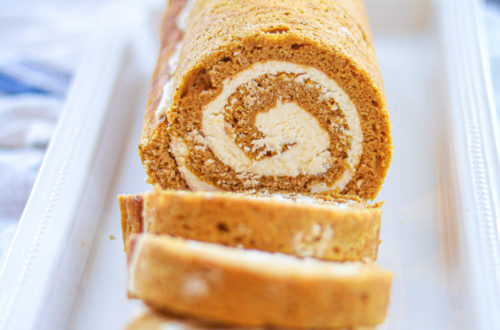
8 Comments
Martina
Absolutely delicious, this is one of my favorite flavors combo and it is so nice to be able to find a gluten free version of it.
Amelia Farber
Thank you so much, Martina!! So glad you made and enjoyed it – definitely one of my favorite flavor combos as well!
Pingback:
Pingback:
Tristan
Such a good cake – really love that it isn’t too sweet, so you can eat multiple slices and not feel weird lol. The black sesame and white chocolate is an awesome combo
Pingback:
Alene
I just wanted you to know that I was in a virtual book club meeting just yesterday for a discussion of a book called Shadow Child by Rahna Reiko Rizzuto. Part of the convoluted story took place at one of the Japanese internment camps. It was a confusing, disturbing story, and I’m not sure I’d recommend it. But, in light of our discussion, someone suggested reading Hotel on the Corner of Bitter and Sweet, by Jamie Ford. It’s about two friends living in Seattle in the 40’s, and being separated when taken to the camps. So I sent your piece to my book club members so they would know about the Day of Remembrance. I hope you don’t mind. People are already emailing me back about your piece, reading it especially at this time in our country. Ironically, someone asked me for your site as her granddaughter has celiac. Also, there is an opinion piece in the New York Times today entitled “Anti-Asian Racism Isn’t New”. It’s all so discouraging. Alene
Amelia Farber
Hi Alene – so discouraging, though SO important that more and more people are talking about these frustrating and moral issues and events. Thank you so much for sharing the post, and for sharing about the books – I haven’t heard of either and will definitely check out both, though maybe will focus on Hotel on the Corner of Bitter and Sweet. It’s a constant learning journey for those of us who don’t experience the negative, direct effects of racism everyday but so important to start helping to shoulder that burden so that others may feel lightened.